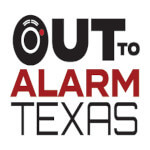Out to Alarm Texas: 5 Common Home Fire Hazards


September 23, 2024
Evidence shows that, when they’re working, smoke alarms save lives. Between 2018 and 2022, three-in-five home fire deaths in the U.S. occurred in homes where fire alarms were not present, or where smoke alarms did not function. The death rate per 1,000 home fires was 60 percent lower in homes with working smoke alarms.
Created through a partnership between the Insurance Council of Texas (ICT) and State Farm Insurance, the Out to Alarm Texas initiative distributes smoke alarms to Texas residents through their local fire departments. The initiative also gives firefighters a chance to inspect existing smoke alarms to make sure they’re functioning and point out potential fire hazards.
Smoke alarms save lives and are a vital component of a fire safety plan—but they can’t prevent fires from starting in the first place. Having a comprehensive fire prevention and safety plan starts with knowing the risks. Learn more about some of the most common causes of home fires and how you can reduce fire risk at home.
- Cooking Fires
Cooking fires account for almost half of all reported home fires and more home fire injuries than any other cause. Most home cooking fires, and about 74% of cooking fire injuries, involve ranges or cooktops. The leading factor that contributes to cooking fires and related casualties is unattended cooking.
To reduce the risk of cooking fires:
- Don’t leave the oven or stove unattended. If you need to leave the kitchen, even briefly, turn the stove off.
- Don’t cook when you’re tired, if you’ve been drinking alcohol, or if you’re on medication that can cause drowsiness.
- Don’t leave the house or go to sleep while cooking something in the oven, and use timers to remind yourself to check it regularly.
- Keep the stovetop clean and clear of items that can catch fire—such as oven mitts, utensils, food packaging, and towels.
- If there’s a fire in the oven, turn it off and keep the door closed.
- If a fire occurs in a pan or pot on the stovetop, cover it and turn off the heat.
- Electrical and Appliance Fires
When people think of the risks associated with electrical systems in the home, they may first think of electrocution. But electrical distribution and lighting systems are also among the leading causes of residential fires.
Preventative measures to avoid electrical fires include:
- Have a qualified electrician inspect your home’s electrical system, and have any work done by a qualified electrician.
- Avoid overloading outlets, and use power strips with overload protection.
- Avoid putting cords where they can be damaged or pinched, and replace worn or damaged extension cords right away.
- Don’t attempt to use devices or appliances with frayed or damaged power cords.
- Don’t leave devices like phones or laptops charging unattended.
- Don’t charge devices on potentially flammable material such as carpet or bedding.
- Always plug major appliances directly into a wall outlet. Never use extension cords or outlet multipliers with major appliances.
Other common household appliances, especially those that generate heat, can be fire hazards if they’re faulty or not handled properly. Basic preventative measures to reduce these risks include:
- Unplug hair dryers, straighteners, or curling irons when you’re not using them, and don’t rest them on carpet, towels, or other flammable material while hot.
- Clean your dryer’s lint filter after each use, and clean out the vent hose regularly as excess lint clogging the hose can catch fire.
- Don’t run dishwashers, washing machines, or dryers while you’re not home or while you’re sleeping.
- Heating Equipment
Heating equipment is one of the top causes of residential fires in the U.S., especially between December and February. Texas is known for short and mild winters, which may cause some Texans to overlook the importance of maintaining heating systems and taking precautions with heating equipment.
Space heaters were the biggest cause of heating equipment-related fires between 2016 and 2020—responsible for one-third of all fires started by heating equipment, about 90% of deaths, and about 80% of injuries.
To avoid heating equipment fires, follow these safety tips from the U.S. Fire Administration:
- Have a professional inspect and clean your vents and chimney every year.
- Keep anything that can burn at least 3 feet away from heat sources including space heaters, furnaces, and fireplaces.
- Place space heaters on a level surface away from foot traffic, children, and pets.
- Turn space heaters off when leaving a room or going to sleep.
- If purchasing a new space heater, buy one that’s suitable for the size of the space and has safety features such as overheat and tip-over protection.
- Smoking Materials
The number of fires started by smoking materials has decreased along with smoking rates in recent decades—but they still happen, and can be especially dangerous and costly. From 2016 to 2020, fires started by smoking materials were the leading cause of all home fire deaths at 25%, despite starting only 5% of home structure fires.
- Don’t smoke inside, and never smoke in bed.
- Don’t place ashtrays on upholstered furniture or bedding.
- Use a wide-based ash tray or bucket with sand, and make sure all smoking materials are fully extinguished, even when smoking outdoors.
- Don’t smoke around medical oxygen, propane tanks, or flammable chemicals.
E-cigarettes and vapes can also cause fire hazards, especially if their batteries aren’t handled properly or stored carefully. Follow your device’s instructions and guidance from the U.S. Food and Drug Administration to prevent vape battery explosions and fires.
- Candles
With no shortage of alternative lighting options and fragrance products on the market, candles have fallen out of favor in many homes. However, some people still choose to burn candles for ambience, fragrance, or for religious reasons.
The U.S. Fire Administration reported decreases in the number of total open-flame fires, injuries, and deaths between 2013 and 2022. However, it also reported an almost 20% increase in dollar loss due to open-flame fires in the same time period.
The surest way to prevent candle fires is to limit burning them as much as possible. There are many alternative lighting options and fragrance products that don’t require an open flame.
If you choose to burn candles, follow these precautions to reduce the fire risk:
- Trim wicks to one-quarter inch before burning.
- Don’t place too many candles next to each other
- Don’t place candles on unstable furniture or near any flammable materials.
- Keep candles out of reach of pets and children.
- Don’t let candles burn down to the bottom of their container.
- Extinguish candles before leaving the house or going to bed.
Learn More About Out to Alarm Texas
Between 2005 and 2023, the Out To Alarm Texas program distributed 29,500 total alarms to more than 50 Texas fire departments—and over 1,700 in 2023 alone.
Smoke alarms are provided and installed on a first-come, first-serve basis. Find out if your fire department offers a smoke alarm program through the State Fire Marshal. If your fire department is not listed, contact them directly to ask if they participate in a smoke alarm program.
